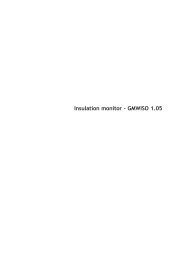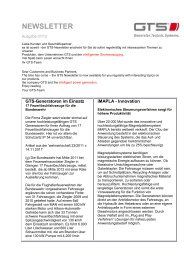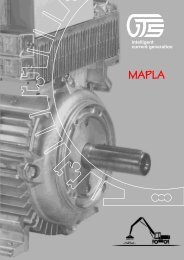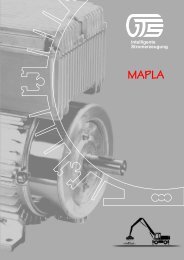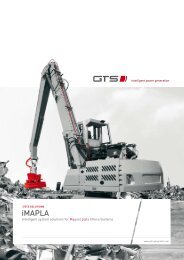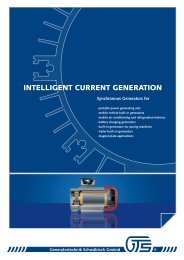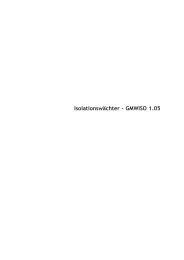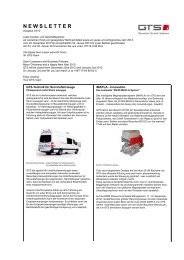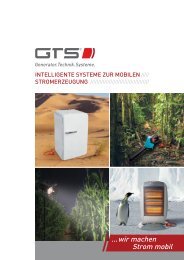Synchronous Generators BG 132 and BG 160
Synchronous Generators BG 132 and BG 160
Synchronous Generators BG 132 and BG 160
Create successful ePaper yourself
Turn your PDF publications into a flip-book with our unique Google optimized e-Paper software.
<strong>Synchronous</strong> <strong>Generators</strong> <strong>BG</strong> <strong>132</strong> / <strong>BG</strong> <strong>160</strong><br />
Chapter 6, Maintenance<br />
6.3 Visual inspections <strong>and</strong> cleaning to be performed by the user<br />
In addition to the safety precautions provided below, read <strong>and</strong> observe the<br />
safety precautions listed in section 6.2 above.<br />
Do not perform any visual inspections for maintenance<br />
<br />
purposes <strong>and</strong> cleaning work on the generator during operation.<br />
Always turn off the engine first <strong>and</strong> make sure that it cannot be<br />
restarted accidentally (e.g. by removing the ignition key <strong>and</strong><br />
DANGER<br />
keeping it safe). Mortal danger by electric shock!<br />
Generator components may be very hot, not just during but also<br />
after operation. Burning hazard!<br />
The following operations have to be performed by the user in monthly intervals.<br />
1. Check the generator housing for damages visible on the outside as well as for<br />
excessive contamination which could impair cooling. If necessary, use a wet<br />
cloth to clean the generator.<br />
2. If the generator is equipped with a control box, check the housing of the<br />
control box <strong>and</strong> the installed sockets for damages <strong>and</strong> contamination visible<br />
on the outside. If necessary, use a wet cloth to clean the control box. Check<br />
the transparent cover of the control box <strong>and</strong> the hinged lids of the sockets<br />
for damages <strong>and</strong> waterproof locking.<br />
3. Check whether the safety <strong>and</strong> warning label <strong>and</strong> the type plate attached to<br />
the generator are readable. If necessary, clean the plates <strong>and</strong> labels or<br />
replace them.<br />
4. Check the cooling air openings on the rear side of the generator for<br />
contamination which could obstruct the cooling air flow <strong>and</strong> use a wet cloth<br />
to clean the openings, if necessary.<br />
88 Issue date: August 2002



